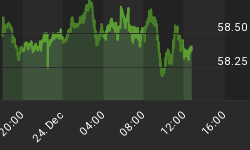It’s been a rough few years for Wells Fargo, and Trump’s promise in December to make sure that the bank pays the price for abusing consumers is now reaching fever pitch.
Wells Fargo (WFC) is now in penalties talks with the Consumer Financial Protection Bureau (CFPB) and the price tag for alleged mortgage-lending and auto-insurance abuses could run to the hundreds of millions of dollars, or even $1 billion as some have suggested.
CFPB acting director Mick Mulvaney was set to testify before the House Financial Services Committee on Wednesday, and then the Senate Banking Committee on Thursday in determining Wells Fargo’s fate.
Most are expecting a record fine, and many agree that the bank has gotten too big to handle. What’s more, the prognosis is that the bank’s trouble won’t be over by writing a big check, either.
“The bank remains the ideal target for those on the far right and far left who believe the biggest banks are too large to manage,” Cowen Washington Research analyst Jaret Seiberg wrote in a client note, according to CBS News.
“Even large fines to not put issues to rest. If anything, the size of the penalty is likely to result in even more political pressure on the bank,” Seiberg said.
Trump’s December tweet started the snowball rolling:

(Click to enlarge)
Then, in early February, then-Federal Reserve chair Janet Yellen signed off on new sanctions against Wells Fargo, just days before leaving her office. The sanctions prohibit Wells Fargo from growing its assets indefinitely. She also demanded the replacement of four board members.
Related: Solving The Social Media Data Crisis
“We cannot tolerate pervasive and persistent misconduct at any bank,” Yellen said in a statement. “The consumers harmed by Wells Fargo expect that robust and comprehensive reforms will be put in place to make certain that the abuses do not occur again.”
Indeed, Wells Fargo had its hand caught in the cookie jar. In late 2016, accusations arose that its bank employees had opened up some 3.5 million fake bank accounts and credit cards without customer authorization. It also reportedly sold unneeded auto insurance to 570,000 customers. It was also accused of charging mortgage borrowers late fees, improperly, and to the tune of millions of dollars just in Los Angeles alone.
Some 5,300 employees were fired in the scandal, and the bank was fined $185 million by regulators.
That was after it copped to the existence of, possibly, 2 million fake accounts.
But it wasn’t before it fired employees who were trying to blow the whistle on the unethical activities.
It’s the scandal that keeps on giving. It faces more than a dozen investigations, inquiries and lawsuits, still.
At this time last year, it reached a $142 million settlement in a class-action lawsuit.
In August 2017, Wells paid $108 million to the federal government over allegations of charging improper fees on home loans to veterans.
Related: Bitcoin Could Find Its Footing After Tax Day
And all of this took place before the CFPB fined Wells Fargo $3.6 million in August 2016, plus a $410,000 restitution payment, over inflated fees charged to student loan borrowers.
It won’t end with this latest fine, either.
The bank’s wealth management practices are also under fire. Last year, the U.S. Department of Justice said it was concerned because whistleblowers were accusing the bank of pushing non-essential services and products on its wealth management customers in a repeat of the auto-insurance scandal.
By Fred Dunkley for Safehaven.com
More Top Reads From Safehaven.com:

















